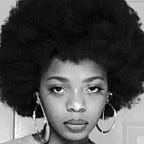URBN: Tailoring the User’s Experience
A case study proposing an in-app solution to Free People’s sizing inconsistencies to better improve user experience and product ratings.
Oversized. It’s a trademark look for rockers, hippies, the girls who want to look effortless yet put together. It is a common fit for a lot of Free People’s pieces, but it is not all that Free People has to offer. However, as the app currently stands, the customer cannot tell what is being offered to them. This is not a sizing issue, rather it is a user experience concern.
And the solution is quite simple, really. What do users want? Their clothes to fit them. What do users need? A sizing feature.
Drawing Attention to the Current Issue
Taking a look at the most up-to-date iteration of the Free People app, one can see that in the product review section, users have the ability to leave remarks on the fit of the garment in question. There are currently three options for the “Size & Fit” category, which consists of “Runs small”, “True to size”, and “Runs large”. However, this feature is less than helpful to potential customers in its current design and placement. There is room for improvement. Currently, customers do not know what size would best fit theme when shopping on the Free People app. Sometimes in Free People I buy an extra small, while other times I wear a medium. However, I do not know which size to get until I try it on but that is not necessarily an option when shopping from home. Customers need a better idea of what the fit of the garment is, how it will most likely fit on their body type, and what size is recommended to them.
The fit of the garments is not the problem. The information that is given to the customers about the fit of the garments-or rather the lack of information- is the problem.
How can we solve this? An updated sizing feature on the app and website. What would this entail? Well first lets take a look at the user’s journey to finding the perfect dress.
User Persona & Good and Bad User Journeys
Solutions to the Problem
The first steps towards improving the user’s experience and solving this problem would be to first inquire more about the customer’s sizing data when they create a profile. This would mean including questions about their preferred fit in dresses, tops, and pants; more options for their body type; keeping a record of their height, weight, and known measurements; and keeping a record of their go-to sizing. From there, we would be able to record how certain pieces preform with certain body types and make recommendations accordingly. This means matching the dimensions to the sizes in a better way. Our app should automatically be able to recommend a size for customers based on their preference, dimensions, and the recorded fit of the garment. For example, women like Stacy would be able to know that since she prefers a tighter fit and considering that a certain top has been recorded to run larger, the app automatically recommends a size that is smaller than what she normally purchases to account for her preferred fit, while also taking into consideration the reviews of those whose body types closely resemble hers. This updated sizing feature would also mean adding the ability to filter reviews based on your body type. Nobody should have to look through hundreds of reviews of people with shapes that drastically differ from theirs. Not only is it a waste of our customer’s time and efforts, but it may also confuse them more than help them if they view conflicting reviews from differing body types that do not match theirs. This could be simplified by allowing the customer to see only the reviews that would best benefit them.
In addition, when first looking at the product details, a sliding scale visualization of the fit of the garment should be clear and under the description. Potential customers should not have to look through tons of reviews to gauge the fit of a garment, especially when many of Free People’s garments have an intentionally oversized fit. The fit of the garment should be front and center as they look at the product’s listing and description.
What this would mean for the user and how else this could benefit the company
These changes would contribute to an overall tailored experience for the user. Upon opening the app, they could potentially be met with clothing options that are recommended to them based on the shape and fit of the garments. For example, if a customer with a slender fit that has a history of buying crop tops, you can recommend emphasizing their shape with a wide legged, high waisted pant that is known to perform well amongst others within their category. Or this means that a girl that typically buys oversized outerwear will be recommended new jackets and coats from this season that she might enjoy that are known to have a looser fit, such as a boyfriend coat or a boxy blazer. This would overall contribute to a better knowledge of our audience and consumers. We would have a better record of what silhouettes and garment shapes sell, be able to better recommend sizes to our customers based off their preferences, it would lead to less confusion on the user’s part, less effort on the user, better product ratings, and an overall improved user experience. These changes would also be beneficial within all of the clothing retail apps that fall under URBN, including Anthropologie, Urban Outfitters, and Nuuly.
This way, both the clothes and the customers experience on the app would be seemingly tailored to the needs of consumers.
My product design work can be viewed here at my personal site. You can also follow me on my Instagram and Twitter, where I talk about UX, beauty, culture, and plants.
